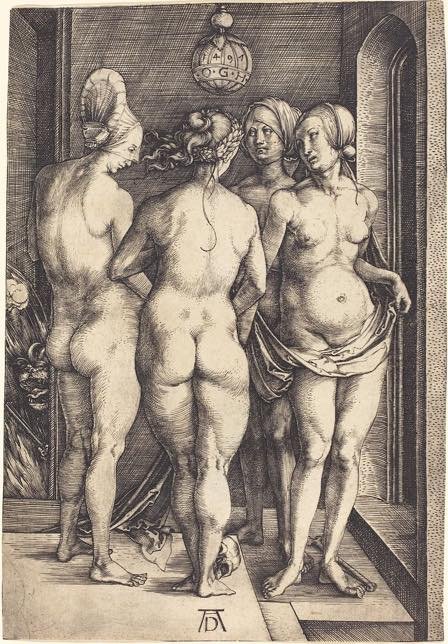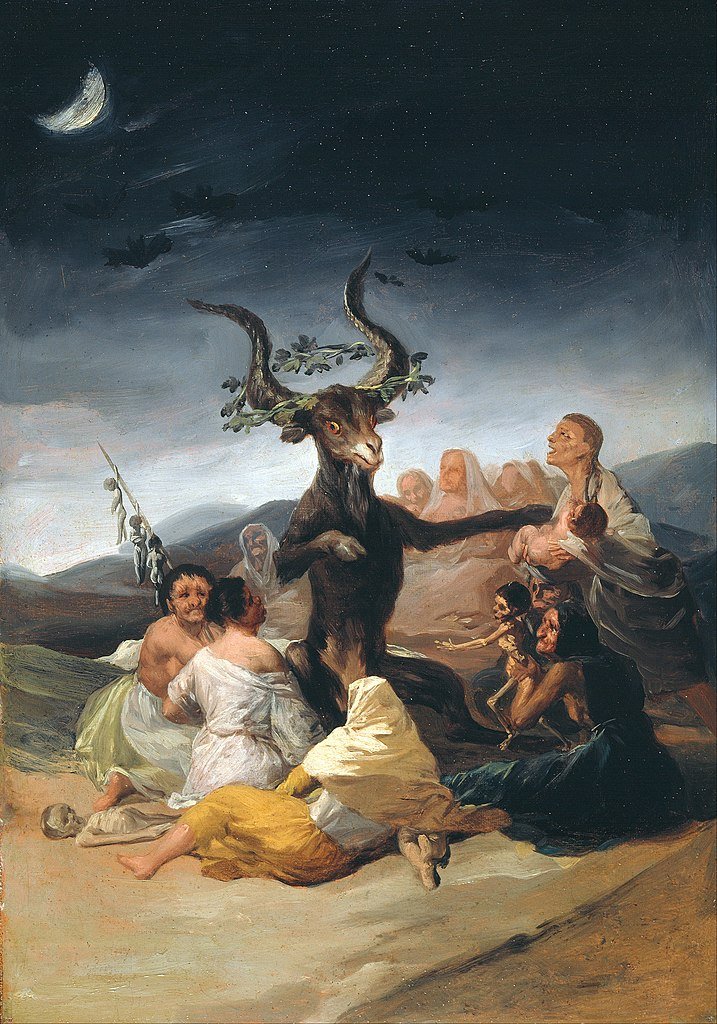Halloween Edition: Witches of History and Art.
In honour of Halloween aka Samhain, it’s only fitting to look at some of the most alluring representations of witches in history and art. It’s the time of the year when the veil between the living and the dead is at its thinnest.
Witches have been known over the centuries as those who have the most power in making this connection with the spirit world.
Read on to explore history’s most mystical witches and artists’ varying depictions of these skilled and sometimes misunderstood beings.
The Shade of Samuel Invoked by Saul by Dmitry Nikiforovich Martynov, 1857.
The Witch of Endor
The Witch of Endor (Hebrew: בַּעֲלַת־אֹוב בְּעֵין דּוֹר) was a woman who lived in the town of Endor in the kingdom of Israel. She was known to be a practitioner of necromancy – a form of magic that allows for communication with the dead. King Saul consulted with her, as he longed to know how to win in battle. When the Witch conjured the spirit of Samuel she warned him as it was prophesied that the King would soon die and the throne be given to another.
This prophecy came true when Saul died in battle shortly thereafter. As for the Witch herself, it's not clear what happened to her after her encounter with Saul and she faded into obscurity.
The Witch of Endor by William Blake, c. 1757-1827.
Circe
Circe Offering the Cup to Odysseus by John William Waterhouse, 1891.
In Greek mythology, Circe was the daughter of Helios, the god of the sun, and Perse, an ocean nymph. She was the goddess of sorcery and lived on the island of Aeaea. Circe was skilled in magic and could transform anyone into any animal or object with a wave of her wand.
One of the most well-known depictions of Circe comes from Homer’s epic poem The Odyssey.
Odysseus and his men landed on Circe's island while they were sailing home from the Trojan War. Circe invited them into her palace where she offered them food and drink, which had been laced with a potion that turned them into pigs. Odysseus confronted her about this, and she revealed her true identity as a goddess and offered to change his men back if he would agree to stay with her for one year.
Odysseus agreed to her terms, but once the year had passed he became homesick and begged to be allowed to leave. Circe was so taken with him that she gave him helpful advice on how to navigate the dangerous waters ahead and even loaned him one of her magical potions.
The legend of Circe has inspired many writers and artists over the years, including paintings by John William Waterhouse, Henri Matisse, Pablo Picasso, Salvador Dali, and Georgia O'Keeffe.
Circe by Wright Barker, 1889
The Magic Circle
The Magic Circle by John William Waterhouse, 1886.
The smaller, second version of The Magic Circle by John William Waterhouse, 1886.
John William Waterhouse painted two versions of this picture in 1886 in the classic Pre-Raphaelite style. The piece was exhibited at the Royal Academy and bought the same year by Tate Britain for £650. Waterhouse had taken a liking to portray the supernatural and was able to create visually pleasing representations of witchcraft that romanticised a theme, which otherwise terrified viewers.
Within the painting are many symbols attached to witchcraft, but that could go unnoticed without a closer look. The mysterious female figure has the symbol of Ouroboros as a live snake wound around her neck, and the ravens and frog are a witch’s familiars (the animal companion a witch keeps as protection and as assistants). The sickle she holds in her left hand represents the moon and a connection to the Goddess Hecate.
Though there has never been a clear identification of the meaning behind the painting, it certainly encapsulates the enchanting nature of a woman harnessing her power and strength, by closing the circle around herself.
Albrecht Dürer
Die Vier Hexen (The Four Witches), by Albrecht Dürer, c.1500
Witch Riding on a Goat, Albrecht Dürer, c. 1500.
German artist Albrecht Dürer lived from 1471-1528. He is best known for his woodcuts, many of which depict witches.
The 15th Century wasn’t the best time to be labelled a witch, as Christianity rose to power, anyone with ‘special’ knowledge could be accused of witchcraft and sent to their death. Dürer's witches are often represented by old, hook-nosed figures flying through the air as seen in Witch Riding on a Goat - the goat being a symbol of the devil and devil worship.
These images would have shocked and frightened people at the time, adding fuel to the damaging reputation of bearing any perceived magical powers.
People in the early 1500s believed that witches were evil beings who cast spells and intended to cause harm to others. They thought that witches could turn themselves into animals, fly through the air, and make potions that would kill people. Dürer's woodcuts would have only reinforced these beliefs.
Today, of course, we know that many of these things about witches are not true. Unfortunately, many of those accused of being a witch were merely women who possessed medical knowledge that was perceived to be magic. These women were often herbalists and midwives, living independently and committed to their work, accused of being too different from what was considered the societal norm.
The Witches’ Sabbath
Witches' Sabbath by Francisco de Goya, 1798
Another artist in favour of using witches as a symbol of evil forces was Francisco de Goya. The painting, completed in 1798 is believed to carry several dark undertones of the artist’s beliefs due to the state of Spain and the Spanish Inquisition.
The central figure is believed to be the Devil, as a goat, surrounded by a haggard coven of witches, who were believed to be worshippers of the evil entity.
The painting continues to stand out even today, by being both fascinating and disturbing, both common themes found around anything to do with magic and witchcraft.
Goya painted several more artworks depicting covens, including Witches Flight. These paintings were seen as a protest against the values of the Spanish Inquisition which saw the church returning to a medieval ideology of control through fear and religion.
Witches Flight by Francisco de Goya, 1797.










